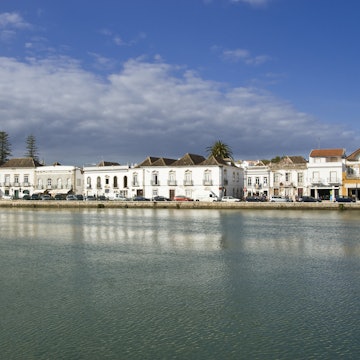
Overview
Soaring cliffs, sea caves, golden beaches, scalloped bays and sandy islands draw over four million visitors to the Algarve each year. Surrounded on two sides by the Atlantic, it's a paradise for surfers, especially along the refreshingly undeveloped west coast.
Leave the planning to a local expert
Experience the real The Algarve. Let a local expert handle the planning for you.
Must-see attractions
Planning Tools
Expert guidance to help you plan your trip
Best Things to Do
Dramatic cliffs, deserted islands, dolphin-watching tours, decadent dinners and more will fill your senses in the Algarve.
Read full article
Best Places to Visit
The cliff-top towns, rugged coast and inviting beaches of the Algarve hit all the right notes for surfers, seaside holidayers and everyone in between.
Read full article
Best Time to Visit
The natural beauty of the Algarve's cliff-backed golden beaches is obvious year-round, but you may experience the region differently in some seasons.
Read full article
Things to Know
Make the most of your visit to Portugal’s Algarve, with these tips on packing, local etiquette and safety.
Read full article
Transportation
You'll find offbeat beaches, orange groves, flamingos and more in the Algarve. Here's how to get around.
Read full article
Free Things to Do
If you’re looking for the best free things to do in the Algarve in Portugal, start off with these top activities.
Read full article
Money and Costs
Though some prices have creeped up in the Algarve region in southern Portugal in recent years, you can save money with these 17 tips.
Read full article
Traveling with Kids
The Algarve in southern Portugal draws over 5 million tourists a year to its sublime beaches, scenic hiking trails and reliably sunny weather.
Read full article
Best Road Trips
If you’re looking for the best road trips through the Algarve, don’t miss these six top drives, taking in hilltop villages and stunning coastal scenery.
Read full article
Get a book. Get inspired. Get exploring.
in partnership with getyourguide






















